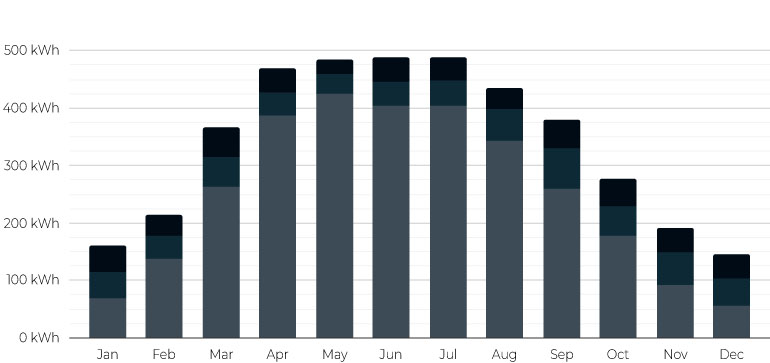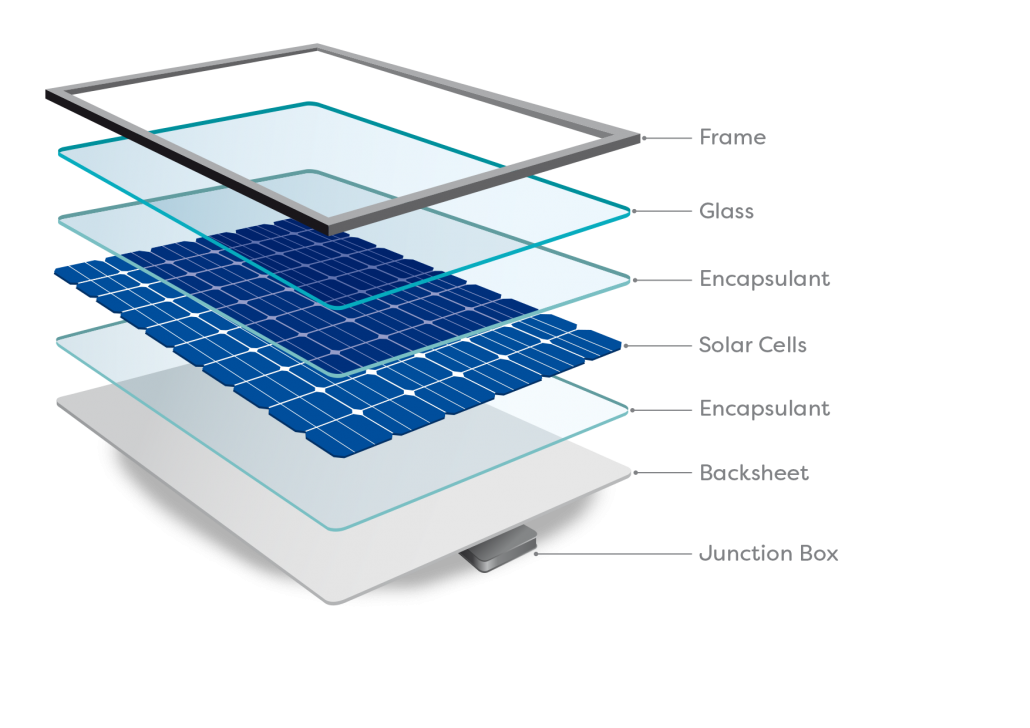- July 17, 2020
- Posted by: Rob
- Category: Solar

Since 2007 the solar industry has been in consistent growth. Solar is becoming the new normal for energy generation in California. Whether it’s improving the environment or setting up new regulations with utilities, the state is going to switch its power to renewables. How solar cells work isn’t as complicated as it may seem. From small residential rooftops to large acres of land solar PV energy is produced exactly the same way. Even though solar manufacturers compete against each other, they all use the same formula and technology.
If you’re looking to go solar you may want to know what is actually going to be installed on your property. Here’s some basics on how solar cells work.
How Solar Cells Are Made
Inside those large solar panels are smaller square shaped PV cells. PV stands for photovoltaic which means “production of an electric current when exposed to light”. Solar panel manufacturers create the cells from a combination of various elements including silicon, quartz, boron, and copper. A chemical reaction occurs once these elements are exposed to sunlight which then converts the light into electricity. Because copper is super conductive, its electricity is then distributed as power.
Solar Panel Deconstructed
The amount of photovoltaic cells on a single solar panel dictates the panel’s size. Despite such a wide variety of solar panels available, the most popular have 60 or 72 cells in each panel. Manufacturers design solar cells that vary in power. This is translated in Wattage. Wattage is the sum of how much electricity a single solar panel can generate. The more Watts a panel has , the more solar energy it will generate. Most panels on the market today average at 325 Watts.
How Solar Cells Produces Electricity
An installed solar system (array or collection of solar panels) will vary in its output of electricity. The sun’s orientation in the sky travels from east to west. An ideal solar system will be pointed in the direction where it can absorb as much sunlight as possible. Electric generation is seasonal. Productivity is determined by the time of the year and how high and how long the sun shines in the sky. Summer will always produce more power than winter.
Annual Solar Energy Output

Soiling is another aspect that determines a solar system’s output. Soiling happens when pollution, dust, dirt, collect on top of the panels over a long period of time. A rainy day or a rinse down from a gardening hose will clear up any debris and dirt.
Solar Cell Performance
Solar cell’s efficiency is going to determine how well it performs over the years and how much electricity it will produce from the sun. Every solar panel has a rating system for its performance. Today’s solar panels range between 18% to 22%. Obstacles such as clouds, trees, shade, weather, angle of the sun affect performance. The higher the efficiency – the more strength the panel has to collect solar energy. However, the elements used to create solar cells do deteriorate over time. Manufacturers know that the design of the panels are not meant to last forever. For that reason every solar panel has a degradation process. The good news is that the degradation is very slow. It takes 25 years for a solar cell to lose 20% of its production. So even after 25 years, a solar system is 80% efficient. Manufacturer’s guarantee production of their solar products for 25 years.
Solar is a simple yet efficient technology that has improved over years. Consistent innovation and research by manufacturers have made solar not only more affordable and more powerful, but better looking too. Eventually solar is going to take over traditional methods of generating electricity. So why wait? If you’ve been thinking about switching to solar power, schedule an appointment with me to know if you qualify.


